Beaumont may be a small city in Texas, but it’s home to the large state-of-the-art facility, the Texas Energy Museum.
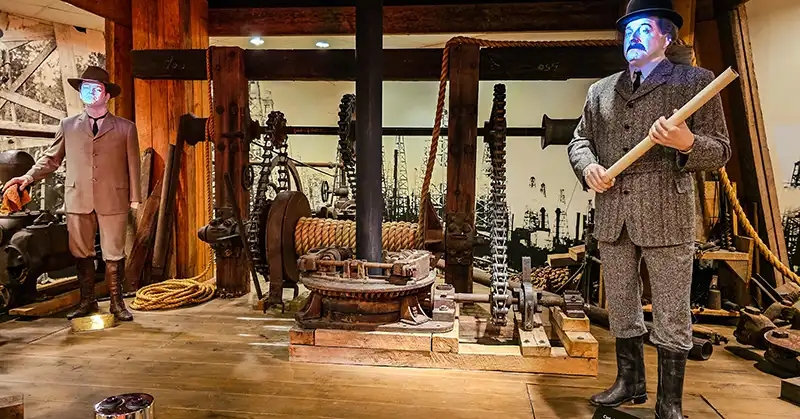
The museum showcases Texas’ oil and gas heritage with interactive exhibits, environmental awareness, educational perspectives, and industry insights.
Linda’s Pick of the Exhibits
The Texas Energy Museum Beaumont is the best museum I’ve visited on the history of hydrocarbons. I especially enjoyed the interactive exhibits. With a push of a button I was back in time, hearing how oil was discovered here.
My favorite was the Standard Cable-Tool Rig display and roughneck. This character talked about his life and experiences with the early drilling tools.

The most amazing thing I learned, though, was that the Texas Oil Boom was much like the Gold Booms elsewhere in North America.
Who knew wildcatters flocked to an oil discovery and set up rigs to hit it big?
I sure hadn’t!
Indeed Spindletop, outside Beaumont, hit it big in a huge way, becoming famous in the seconds it took to say “gusher.”
Fast Fact: Imagine how amazed those hard-working early drillers must have felt seeing the world's first "gusher" on January 10, 1901. And gush it did -- an incredible 200 foot column of oil shot up to the sky!
What’s in the Texas Energy Museum Beaumont?
The Texas Energy Museum focuses on the history, technology, and science of petroleum. It was incorporated in 1987, and opened to the public on January 10, 1990. That date was the 89th anniversary of the Spindletop gusher.
Both floors of the museum are organized in an easy-to-follow circular pattern.
The first floor starts with the sun and rocks, providing scientific data on the formation of oil. It takes a deep dive into hydrocarbon molecules, explaining them through models.

A series of panels take you through time, providing details on the major events of the past centuries. You’ll also find detailed information on modern oil production and refineries.
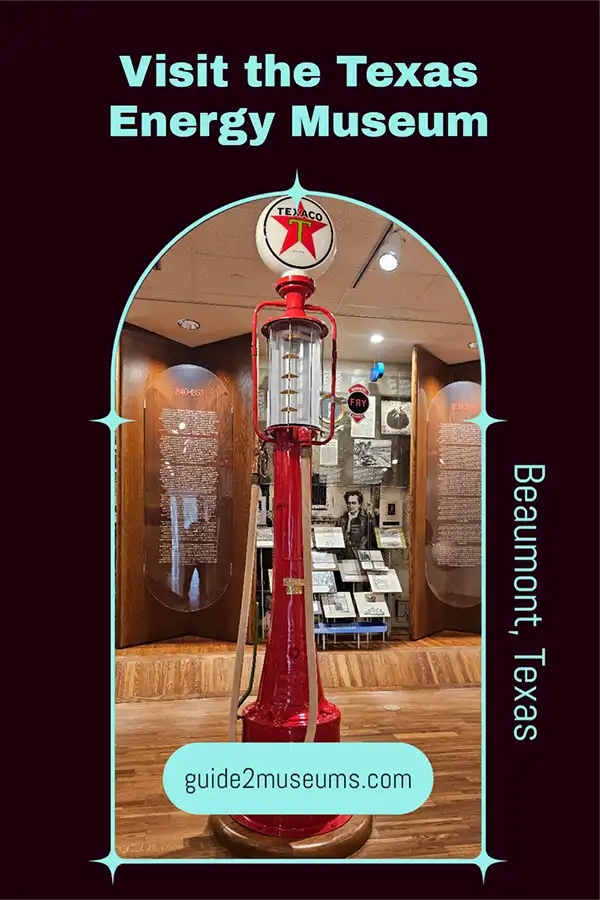
Fast Fact: About 50% of a barrel of crude oil is transformed into gasoline for cars. As well, 40% becomes home heating oil, diesel fuel, jet fuel, kerosene, & industrial fuel. Most of the rest is converted into lubricants, greases, and asphalt. About 5% leaves as "feedstock" that's eventually converted in thousands of uses including aspirin to antifreeze and plastics to paint.
~ Texas Energy Museum display
Second Floor
The second floor has more of a local focus, and this is where you’ll find additional information on the Spindletop gusher.
How much oil did Spindletop produce?
Between January 10, 1901, and the end of that first year, almost 140 individual wells gushed oil.
Spindletop produced 100,000 barrels of oil per day. That was more than all of the oil produced elsewhere in the world. Since then, Spindletop’s oil field has produced more than 153 million barrels of oil.
So how much was oil worth back then? A hefty nickle a barrel.
But Spindletop was just the beginning. Wildcatters continued to drill just as miners continued to pan for gold after the first discoveries.
Thirty years later, 70-year-old wildcatter, Columbus “Dad” Joiner, discovered the East Texas Field spread across five Texas counties.
With 7 billion barrels of oil, it was the largest reservoir of oil in the Americas.
The oil boom changed the world. Cars became more popular with cheap fuel. Oil helped the Allies to victory in WWII. And we have hundreds of byproducts from oil refining that produce plastics, lubricants, fabrics, and more.
There are also some original pieces of equipment, including Miss 101.
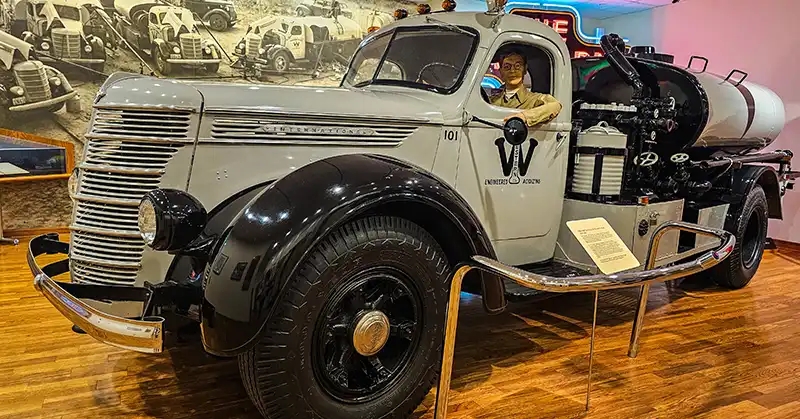
Fast Fact: Truck 101 helped pump 9,500 gallons of acid in three stages at a 5,200 foot depth into the San Andres formation. It was the first oil well acid treatment used to clean out scale, rust, and other debris restricting flow in an oil well.
Linda’s Road Trip Tips
Beaumont is a great stop on a Texas roadtrip. We particularly liked it’s smaller size after navigating down I-75 from Fort Worth to San Antonio! Close to Texas’ eastern border, you’ll find the culture is a little bit Cajun as well as Texan.

Indeed, if you’d like your fix of Cajun eats, Tia Juanita’s Fish Camp is a good choice. It’s a lively atmosphere — especially if you go when the music’s playing!
The Texas Energy Museum is in a complex of museums that includes the Art Museum of Southeast Texas and the Beaumont Children’s Museum. If you’re interested in learning more about Spindletop, you can also visit the Spindletop Gladys City/Boomtown Museum.
And if you’re just cruising through town, be sure to take note of the murals. Check out some of Beaumont’s murals in a virtual guide.

Who Should Visit the Energy Museum Beaumont?
The Energy Museum Beaumont is a great attraction for all of us.
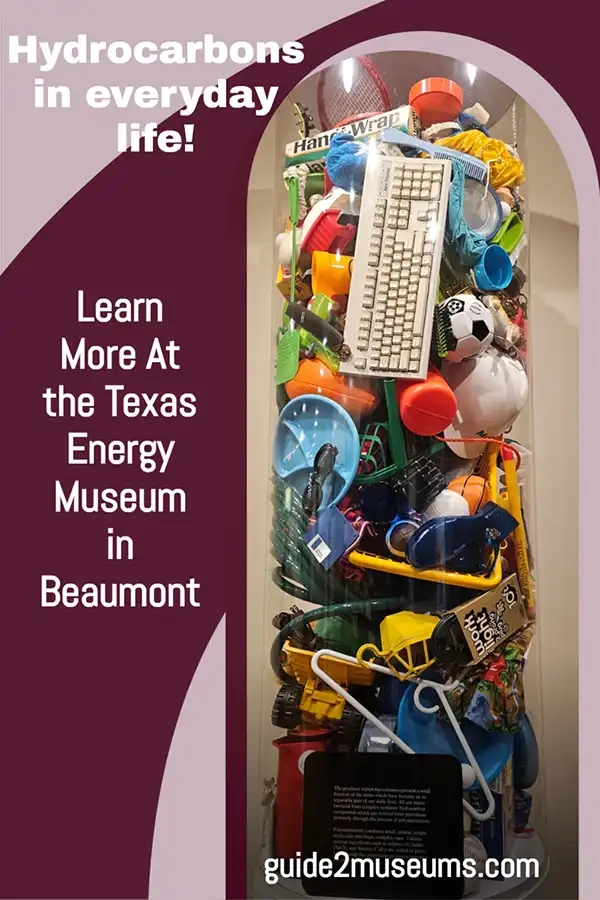
Whether we realize it or not, we all use dozens of products every day that come from hydrocarbons. What are they? Hydrocarbons are the principal constituents of petroleum and natural gas.
The Energy Museum’s interactive displays make the history and concepts come to life.
However, the museum isn’t just for kids. The science behind oil production and its usage are covered in-depth.
While you can zip through the museum in a couple of hours or so, it could easily take half a day or more if you’re reviewing all the information.
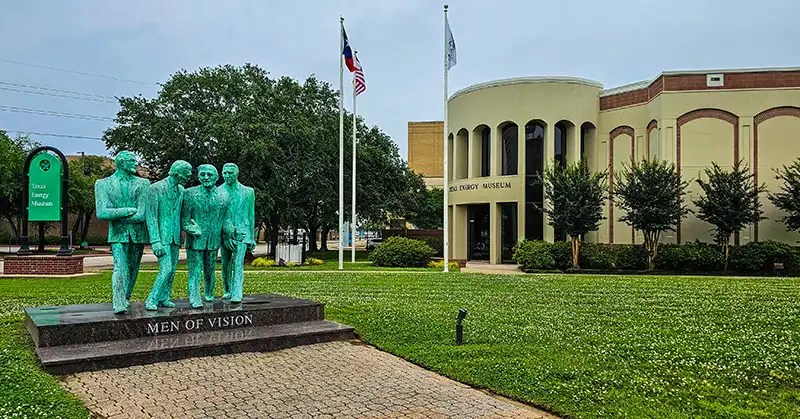
The museum, as you’d expect, has an elevator between floors and is readily accessible.
How Do You Visit the Texas Energy Museum?
The Texas Energy Museum showcases the history and significance of oil in Texas. With state-of-the-art displays and interactives, it’s a fascinating attraction for people of all ages.
Street Location: located in downtown Beaumont at 600 Main Street in the Museum District. It was easy to get to from I-10.
Parking Information: There's plenty of free parking right outside the museum. The parking area is also used for the Art Museum of Southest Texas.
Check days and hours open on the Texas Energy Museum website.
Take a virtual tour of the Texas Energy Museum with Fox Beaumont on YouTube.
Keep up-to-date with what’s happening at the Texas Energy Museum Facebook page.
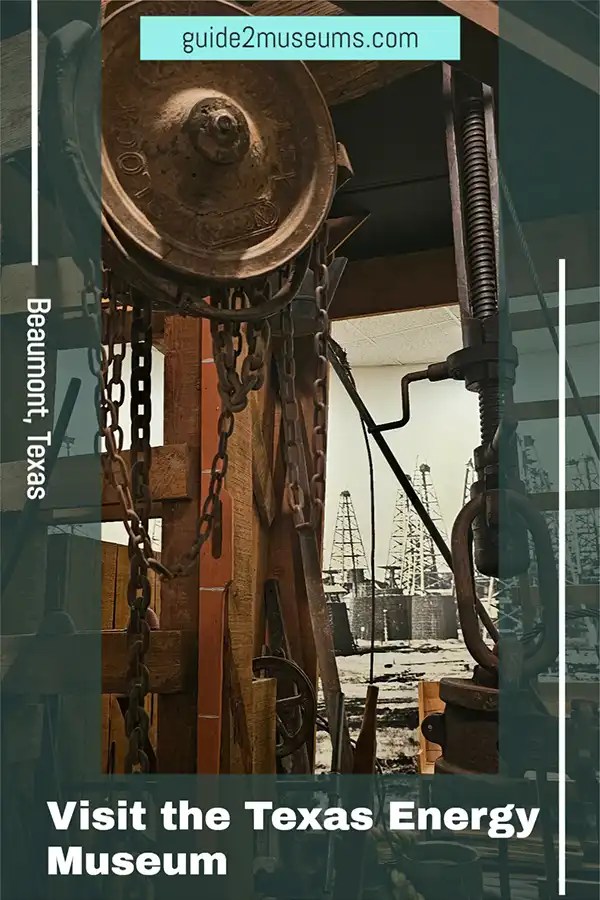
Read More Texas Museum Reviews
Check out all of guide2museum.com’s reviews of museums in Texas.
Discover More Technology Museums to Visit
- Discover the Amazing Canada Science and Technology Museum

- EAA Aviation Museum in Oshkosh, Wisconsin: Airplanes from All Eras

- Medalta Museum: Ceramic Arts in Medicine Hat, Alberta

- Claybank Brick Plant National Historic Site: Claybank, Saskatchewan

- Ocean Star Offshore Drilling Rig & Museum: Galveston, Texas, Oil Drilling History

- McCormick Bridgehouse & Chicago River Museum: Chicago, Illinois

- Stafford Air & Space Museum: Space Shuttles to Rockets in Weatherford, Oklahoma

- Texas Energy Museum: Oil History in Beaumont, Texas

- Dr Pepper Museum: Great Tastes in Waco, Texas

- Museum of Clean: Pocatello, Idaho

- Alexander & Baldwin Sugar Museum: Puunene, Maui, Hawaii

- Idaho Potato Museum: Blackfoot, Idaho

- Manitoba Agricultural Museum: Rare Historic Farm Machines in Austin, Manitoba

Acknowledgements
David and I would like to thank the Beaumont CVB for one night of hotel accommodations in Beaumont. Assistance from CVBs help make it possible for us to produce this museum review blog.
Reference(s)
Black Gold: The Oil Frontier. (2021). Digital History. https://www.digitalhistory.uh.edu/disp_textbook.cfm?smtid=2&psid=3153
Oil and Texas: A Cultural History. (2022). Texas Almanac. https://www.texasalmanac.com/articles/oil-and-texas-a-cultural-history









